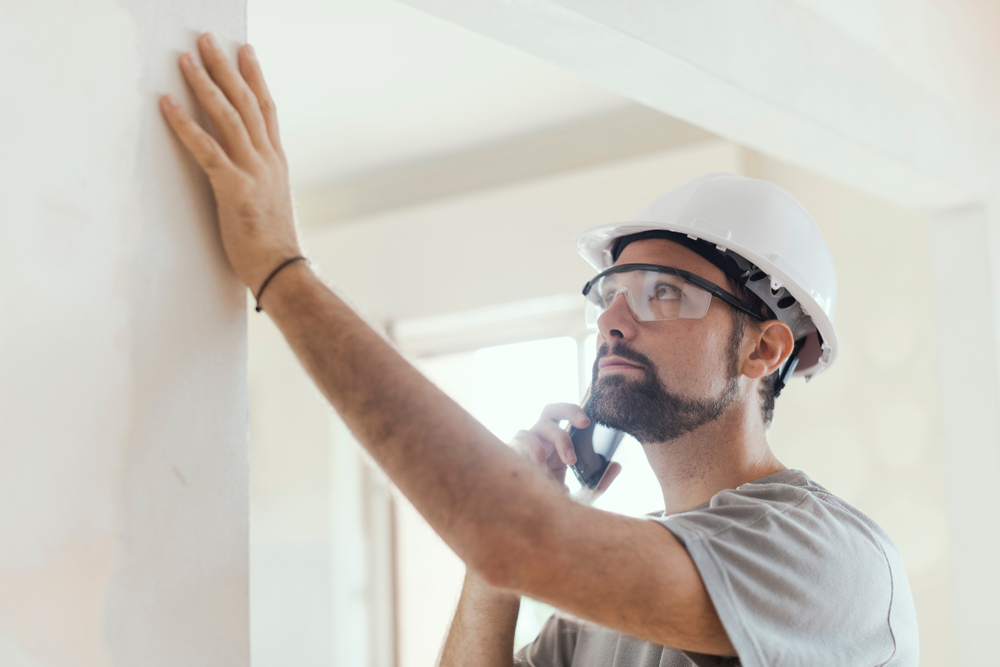
Construction contracts (and contracts in general) are full of lengthy, misleading clauses and provisions. One notoriously misunderstood provision is what’s known as a call back warranty. There are a lot of people in the construction industry that think this grants them one year of liability and then they’re in the clear. Unfortunately, this is a gross misinterpretation of how these warranties work.
In a construction contract, a call back warranty establishes a period of time, after the work is substantially complete, during which an owner can “call back” a contractor to correct work that wasn’t performed correctly. The call back period is often one year, but the contract can specify a different period in the call back warranty. Always follow the language in the contract.
Let’s take a closer look at how these call back warranties work to determine how long a contractor is really liable for defective work.
The one year call back period
Finishing a project and being able to move on to the next contract is a great feeling. That is, as long as nothing went wrong on the previous project. And if they did, there are many who believe that the standard timeline for defect liability is one year. When asked why, most will point to the “call back warranty” that’s included in their contract. But that’s not entirely accurate. To explain this properly, we’ll start with the basics.
What is a contractual warranty?
A contract warranty, at its core, is a guarantee that what’s stated is true and accurate. These can be either implied by law, or expressly written into the contract terms themselves. In the realm of the construction industry, implied warranties are typically a warranty of habitability and a warranty of good workmanship.
As for express warranties, a call back warranty is almost always included in a construction contract. A well-drafted warranty should be fully comprehensive. It should describe the specific problems and remedies that the party may be responsible for, the way the issue will be dealt with, and the length of time the warranty will be in effect.
Standard “call back warranty” clauses
As mentioned earlier, these types of warranties are in almost every construction contract. So much so, to the point where they’ve almost become standard. Speaking of standard, let’s take a look at the AIA 201 standard contract form. This includes a section that states:
…if, within one year after the date of Substantial Completion of the Work… if any of the Work is found to be not in accordance with the requirements of the Contract Documents, the Contractor shall correct it promptly after receipt of notice from the Owner to do so… The Owner shall give such notice promptly after discovery of the condition. During the one year period for correction of Work, if the Owner fails to notify the Contractor and give the Contractor an opportunity to make the correction, the Owner waives the rights to require correction by the Contractor and to make a claim of breach of warranty. If the Contractor fails to correct nonconforming Work within a reasonable time during that period after receipt of notice from the Owner…, the Owner may correct it.
As with most contract provisions, that’s a lot of words to say something that is fairly simple.
Obligations under a call back provision
A call back warranty provides both obligations and duties to both parties of the contract in the event of a construction defect. The property owner is obligated to notify the contractor and allow them to repair the defective work on their own. On the other hand, the contractor has the right to repair the defect before the owner takes other (and typically more expensive) measures to get the work fixed.
Let’s say, for example, that a property owner contracted to get a new roof installed. But 9 months later, the roof begins to leak because a contractor didn’t seal a skylight properly. Since this defect falls under the year call back period, the obligations will kick in. This means that the owner has to inform the contractor, and allow them return and repair the skylight leak. At that point, the contractor can either return to fix the work (at their own cost), inspect the work and decide to dispute it, or simply just ignore the notice.
Defects that fall outside the call back period
Now, what happens if, (a) the contractor decides to ignore the notice from the owner, or (b) the defect is discovered outside of the call back period. At that point, the owner is no longer obligated to give the contractor an opportunity to fix the problem. The property owner can now go out and find another contractor to fix the defective work (most likely at a higher price).
Once the work is completed, guess who the owner is coming after to pay for that contract? (If you guessed the original contractor, you’re right.) Not only that, but the owner will most likely file a suit in small claims court to recover that money, which only means additional court costs and attorney fees. That’s because the owner still has other legal remedies available to recover those costs.
So how long is a contractor really liable for defects?
There’s a common misconception that the call back period applies to all covenants and warranties under the contract. But the kicker is, the call back period only applies to the requirements of the provision itself. That one year warranty period specifically refers to the obligation of the owner to give the contractor the right to cure, and the contractor’s right to be able to fix the defective work.
So, just because a year has passed, doesn’t mean the contractor is in the clear. The call back warranty is just one of a few different options available for property owners. They will still have the right to make a claim for defects or breach of contract for far longer than that. This is determined by the state’s statute of limitations and statute of repose.
Statutes of Limitation and Repose
Although these two phrases seem similar, there are some important differences. Both set time limits on an individual’s right to file a lawsuit, but they operate in very different manners.
A statute of limitation limits the amount of time a person can file a claim after suffering some sort of harm. The timing is specifically based off of when the harm or damage occurred. On the other hand, a statute of repose sets a deadline to make a claim based solely on the passage of time of the occurrence of a specific event. The timing is unrelated to the harm actually caused. This timing is typically used for things like product liability or construction defects. For these deadlines, the clock for this deadline usually begins ticking once the construction project is substantially complete.
To give some examples as insight, the average statute of limitations for a breach of contract claim will fall somewhere between 3 and 10 years from when the defect was discovered, depending on the state. The statute of repose for a defective work claim can go even longer. The average statute of repose governing construction defects runs for 6-12 years after substantial completion of the work under the contract.
Bottom line
Reading, and understanding, every part of a construction contract is crucial to limiting your exposure to financial liability. Just because there is a call back provision in your contract doesn’t mean your hands are wiped clean of the previous project. There are many different avenues provided to property owners regarding construction defects.
Some advice? If the contract includes a call back warranty, and the owner notifies you of defective work; jump on that opportunity. At the very least you’ll get a chance to inspect the alleged “defective work.” Then you can decide whether to fix it or challenge it. Doing nothing will not only make matters worse, but significantly more expensive as well.

